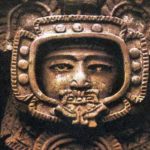In 2015, researchers from the University of Cincinnati made a significant discovery in Pylos, southwestern Greece – a Bronze Age tomb belonging to the so-called “Griffin Warrior,” a wealthy Mycenaean individual dating back to 3500 years ago. Inside, archaeologists uncovered a trove of treasures, including precious jewelry, armor, weapons, and many ships made of precious metals. However, one of the most exciting discoveries was a seemingly insignificant piece of agate stone. Initially covered in limestone, it took a year of meticulous restoration to reveal its true form.
Beneath the limestone lay a remarkable find that would rewrite art history. As the intricate details of the stone’s design began to emerge, researchers were astonished to realize they had unearthed a masterpiece. The agate, named the “Pylos Combat Agate,” depicted an intense battle scene between two warriors, with a third figure already crumpled on the ground. This scene was meticulously carved on a 3.6-centimeter hardstone, with some details as small as half a millimeter.
The Resurrection of a Masterpiece:
The Pylos Combat Agate is a gemstone less than 4 centimeters in length, buried under layers of limestone and dirt for millennia. Once cleaned, it revealed an astonishing work of art.
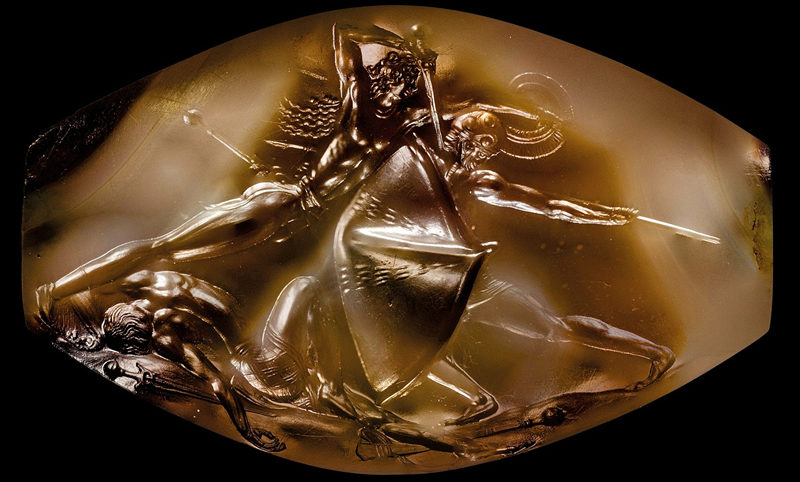
The research team discovered this masterpiece two years ago, though at the time, it was thought to be a small bead or something similar, given the presence of 1400 other artifacts excavated alongside it. The discovery was made in a Bronze Age warrior’s tomb in southwestern Greece, dating back to 3500 years ago. The gemstone, referred to as the “Pylos Combat Agate,” was likely considered a piece of jewelry.
In 2015, researchers discovered this tomb, which was a major find. The tomb contained the well-preserved remains of the “Griffin Warrior.” It earned this name due to a decorative plaque with a griffin among his burial offerings. A griffin is a legendary creature with the body of a lion, the head of an eagle, and wings. The burial offerings of the “Griffin Warrior” also included numerous gold signet rings and a bronze sword. The gemstone, initially unassuming, revealed its artistic value only after meticulous cleaning, and details of it are now published in the journal “Hesperia.”
Stocker said, “To be able to see this object is really magical, and I’m still astounded. It brought tears to my eyes.”
Battle Scene:
Jack Davis, a Greek archaeology professor at the University of Cincinnati, discussed the seal, saying, “What is fascinating is that the representation of the human body is at a level of detail and musculature that one doesn’t find again until the classical period of Greek art, 1000 years later. It’s a spectacular find.”
Davis added, “Some of these details on the seal are only a half-millimeter big; they’re incomprehensibly small.”
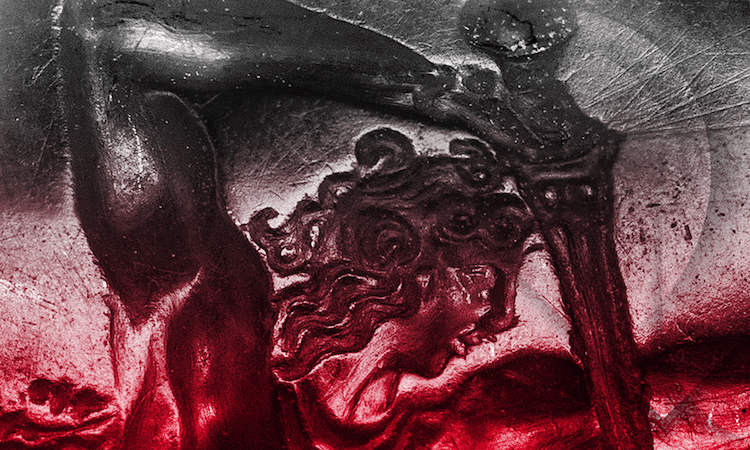
The seal will reshape modern understanding of art history and the development of Greek art, as previous Bronze Age discoveries all exhibit unparalleled craftsmanship and artistry, with many details only visible under magnification. Researchers are puzzled about how ancient artisans achieved this without modern tools, prompting a reconsideration of the evolution of Greek art.
To scrutinize the carving details, microphotography is necessary. Some elements are only half a millimeter in size. During the carving process, magnifying glasses would have been indispensable, but as of now, archaeologists have not found evidence of such magnification tools from that era.
Professor Jack Davis from the University of Cincinnati described the details as “incredibly tiny” during a press conference.
In an interview, Davis further explained that no artifact of such fine detail has been found in the thousand years that followed. He likened it to comparing “Mickey Mouse to Michelangelo.”
The scene depicts a victorious warrior who has just defeated one opponent and is immediately thrusting his sword into another enemy’s throat. The gemstone showcases detailed musculature across the warrior’s body, reminiscent of grand scenes found in ancient Greek epic poems like Homer’s “Iliad” and “Odyssey.”
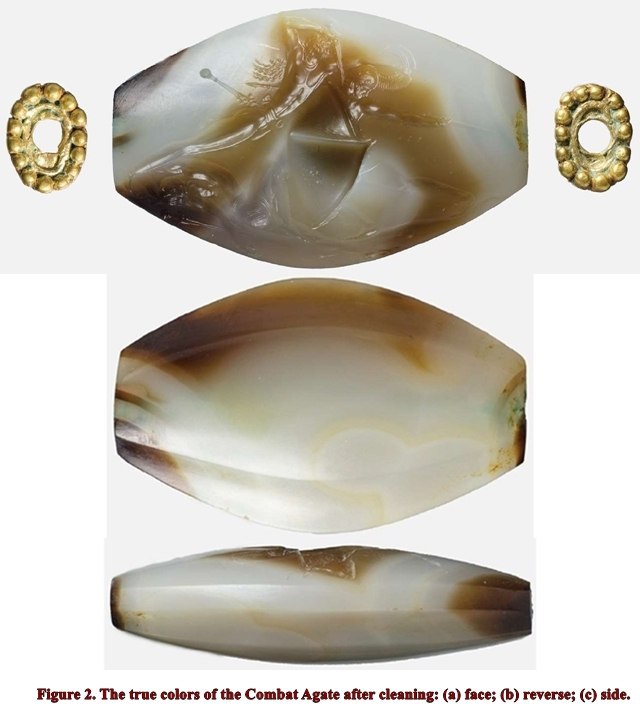
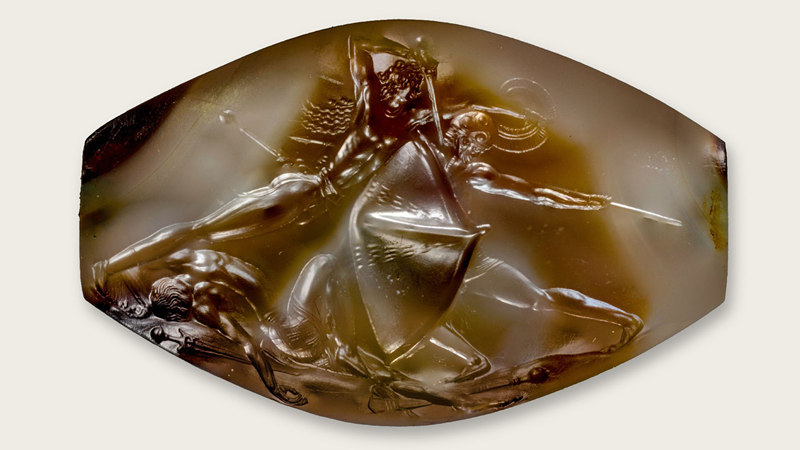
Last year, Andrew Lawler wrote in a report for National Geographic that this ancient tomb is located in Pylos on the Peloponnesian Peninsula, which Homer mentioned in the “Odyssey” as the palace of King Nestor. The exact connection of the scene depicted on the gemstone to the Homer’s epic poems from around 700 B.C. remains a mystery. However, Stocker and researchers believe it likely depicts a significant legendary event of that time.
The Mystery of the Ancient Tomb:
Researchers state that the intricacy and complexity of this carving force historians to reevaluate the craftsmanship of that era. During the Mycenaean civilization, equivalent carvings were not found.
The Griffin Warrior was buried around 1450 B.C., a period of political turmoil in ancient Greece. It’s generally believed that the Mycenaean civilization on the Greek mainland conquered the Minoan civilization on the island of Crete. The influence of Minoan art on the Greek mainland during this time is a subject of debate. Researchers suggest that the tomb of the Griffin Warrior reflects a high degree of cultural exchange at the time. While the exact identity of the warrior remains unclear, the abundance of Minoan artifacts in the tomb suggests that he may have been an elite Mycenaean with a strong interest in Minoan culture.

Shari Stocker, senior research associate in the classics department at the University of Cincinnati, said, “This seal should be included in all forthcoming art history texts and will change the way prehistoric art is viewed.”
Meanwhile, the excavation of the Griffin Warrior’s tomb continues. Over 3,000 burial items have been found in the tomb, including gold rings, silver cups, swords with gold-inlaid hilts, over 1,000 beads carved from gemstones, a bronze suit of armor, an ivory comb, a gold necklace, and 50 seal stones. These discoveries are cataloged by Davis, Stocker, and other University of California staff and students. Some items are still in the process of being cleaned and preserved.
END:
In conclusion, the discovery of the Pylos Combat Agate, buried under centuries of obscurity, has not only redefined our understanding of art history but also shed light on the remarkable craftsmanship of the Mycenaean civilization. This intricate masterpiece, with its astonishing level of detail, prompts us to reconsider the artistic capabilities of ancient artisans and raises questions about their tools and techniques.
As we continue to explore the Griffin Warrior’s tomb in Pylos, we anticipate further revelations about the culture, history, and artistry of this enigmatic era. The excavation has already yielded an extraordinary array of artifacts, and it is likely that future discoveries will contribute even more significantly to our comprehension of the Mycenaean civilization and its connections to other ancient cultures.
The Pylos Combat Agate has found its place in the annals of art history, and its impact will endure for generations to come. As we eagerly await further insights from ongoing research, it is clear that this remarkable gemstone has opened a window into the past, enabling us to appreciate the artistry of ancient Greece in a way we never thought possible. The future holds the promise of more fascinating revelations and an enriched understanding of our shared human heritage.
More UFOs and mysterious files, please check out our YouTube channel: MysFiles
What NASA found on Mars in 2023? New Evidence of life on Mars?



